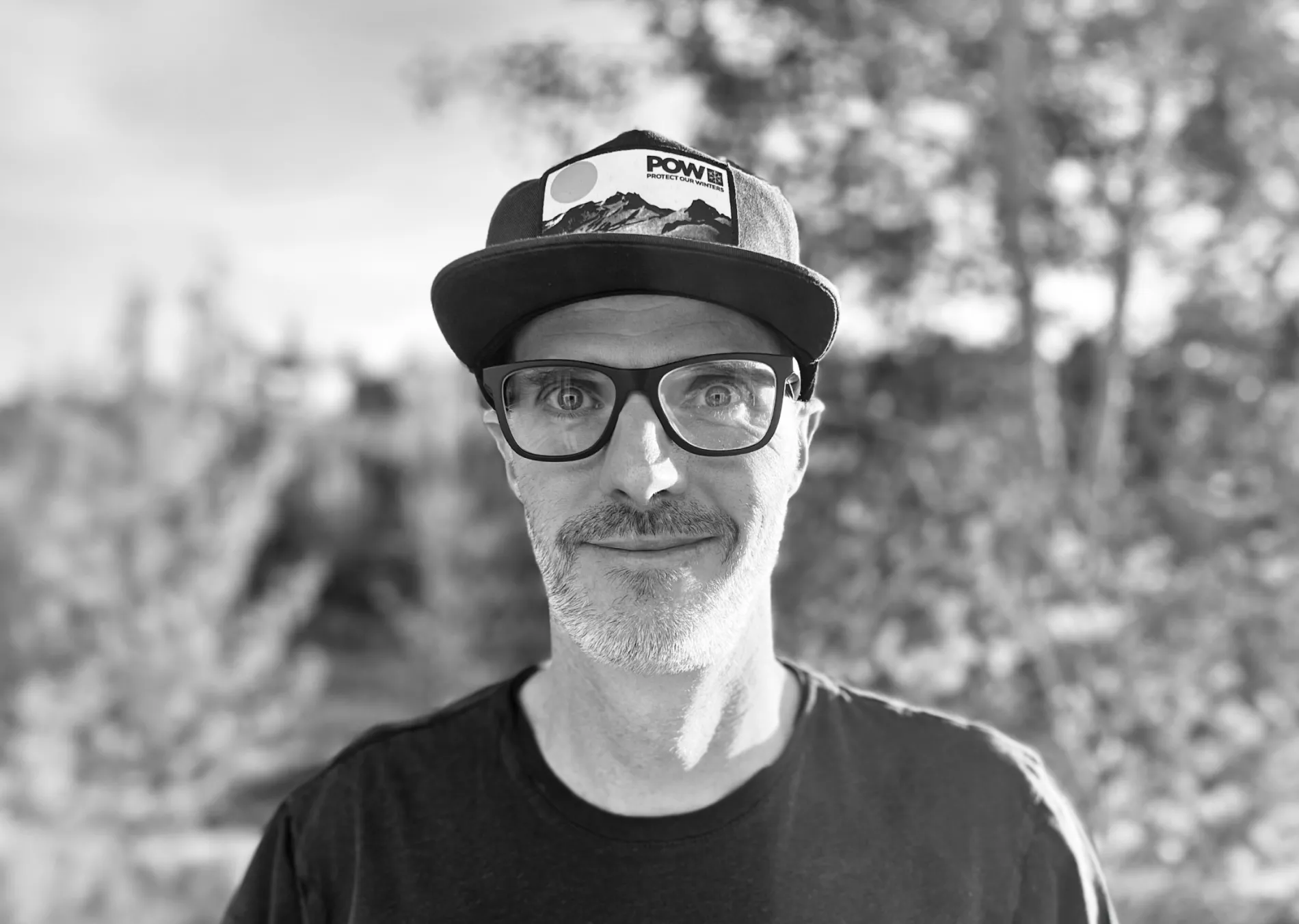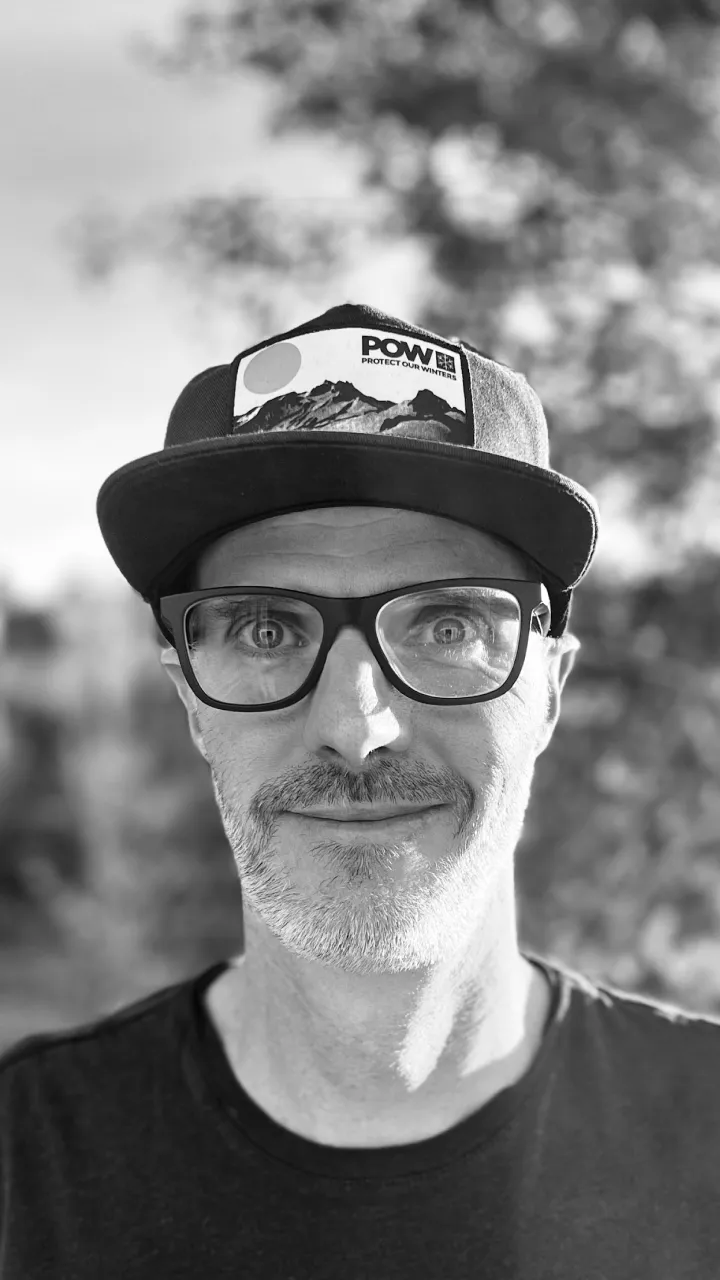Influencers vs. content creators: Who’s winning in ‘25?
An interview with Cadence Media Strategy’s Patrick Crawford
As we head into 2025, influencer and content creator marketing remain hotly debated topics amongst content marketers. To help gain some newfound clarity on the subject, we sat down with Patrick Crawford, founder and president of Cadence Media Strategy, to gain some insight on what these relationships are, how to approach them, and how they can be effective in the short and long term.
Origin: Can you tell us a bit about yourself and your background in influencer marketing?
Patrick Crawford: I’ve worked around this space for a long time. I started my career in media. I was the founding editor of Freeskier Magazine, and it was a time when all the snowsports media were beginning to create heroes and household names out of the athletes, and the industry as a whole started thinking about how powerful the individual brand can be.
In 2013, I got together with two of my Freeskier colleagues, Christopher Jerard and Luke Blaser, to found Inkwell Media. Inkwell’s work was a combination of helping brands with social and content strategy, and what eventually became known as creator marketing. We worked with a huge variety of brands — including The North Face, Red Bull, YETI, Toyota, GORE and The Mountain Collective — as well on some dream projects, like doing social marketing “Free Solo” and “Meru.” Every project was unique, but it was always based on connecting brands, athletes and communities through social media.
We sold the company to Outside Interactive in late 2021, and I was there for 2.5 years. Last spring I went back on my own, focusing on content and creator strategy under my own company, Cadence Media Strategy.
Every signal I see points in the same direction, which is an increasingly decentralized media ecosystem and growing opportunity for individual athletes and creators to build their own brands. It’s such an interesting time to think about what comes next in media.
Origin: Do you have a definition of influencers vs. celebrities vs. micro-influencers vs. the myriad of other terms out there?
PC: I don’t focus very much on definitions of these terms, because I don’t know how it adds clarity to your strategy.
To the degree that you want to delineate, it’s about considering what an individual primarily does for a living, how they approach content, and how they interact with their community.
In our space, everyone can picture an athlete — someone who’s primary job is to be amazing at their sport. At Inkwell, we always boasted that the people we worked with had social audiences because they were world class at something besides Instagram. That’s still how I think of an athlete. They might be great content creators too, and they usually have tremendous authority and respect within their communities. Celebrities may fit this mold, like an actor or musician.
Creators are media-brand-of-one entrepreneurs. A creator thinks about distribution, about building content to reach audiences, and how to create a business around their audience. They might be a world class athlete, but often are amateur athletes, because they’re actually in the media business. Increasingly I think these are the people who once would have started out in traditional media, like I did. They might have tried to get a job at a magazine or a film company, but now they’re solo-entreprenuers.
Most people don’t want to be called an influencer anymore, so it’s a useful term for insulting your competitor’s marketing strategy: “They just work with a bunch of influencers.” I think of influencers as someone who has figured out how to game social media attention, but may not have much authority even with their social following. They have an audience, and they’re more transactional with trends and brands, whatever moves the needle for the next post. If posting fitness videos pops today and ranting about raw milk hits tomorrow, they’re up for it.
The micro-macro distinction is totally arbitrary. How do you compare someone who built a huge audience on Instagram but now has essentially no engagement, with someone who has 40,000 highly engaged followers and who reaches more people on a daily basis? Which of those two is the micro-influencer?
Your goal is to build a team of people who can help tell and distribute your story. Worry less about the terminology and more about how they fit as a piece of the puzzle to solve your problem. What do they do well? What is their engagement? Who is their audience? How do they fit with other people in the program? Do they have a reputation outside social media?
Origin: Are there any specific channels that stand out to you as most effective with micro-influencers? (i.e. is it a TikTok play, Instagram, Facebook, etc...)
PC: I focus much more on content strategy and distribution rather than comparing channel characteristics. Every platform has micro- and macro-influencers on it, communities of various sizes, and things it does well.
So, where does your community spend its time and attention? Figure that out first, then worry about all the rest. Also, be realistic about what you can achieve. You’re better off with a good strategy on fewer channels than being spread so thin that you can’t succeed on any platform or in any community.
Origin: We recently saw a LinkedIn post that compared the ROI of hiring Kim Kardashian for $1m dollars, or hiring 1000 micro influencers at $1000 each. The post led to the conclusion that you would get more and diverse reach with a variety of micro-influencers. It omitted a detail which was the time and resources required to manage 1000 individuals and their deliverables. What do you see as the main consideration points in evaluating macro vs. micro-influencer strategies and the cost/benefits?
PC: That’s probably a good point, but also, how many people does it take to manage your relationship with Kim Kardashian? How many hours went into the collab between The North Face and Skims? That is not a light lift either.
But as we’ve been saying, a celebrity and a niche creator are different in every way. It’s helpful to think of individual creators as media entities, which is really what they are. If you were planning a media strategy, it’s obvious that a billboard in Times Square is different from running ads in a local newspaper. Either tactic could play a role, but you would never imagine them as the same thing.
That’s how you should think about your content strategy. Define what you’re trying to achieve, define what roles you need creators to play, then go find the right people.
And most importantly, talk to them. Even if it’s a short-term project, you need to build a partnership, and people are always exactly like they are in the initial conversations. If you call a potential collaborator, and the conversation is awful, trust your gut. Assholes don’t become awesome after they sign a contract.
Origin: OK, now the million dollar question… How do we even begin to measure the effectiveness of these things?
PC: Campaign-level analysis and good data-storytelling are really important. This is not the same ROAS or some social engagement metric. Those are important, please measure them, but they don’t tell the whole story.
You get all these separate channel managers, and each has a very specific skill set for managing toward a KPI, but all these individual channels have to come together into a campaign-level vision.
For a new product launch, you might have your athletes posting about how they use the product in their sport, and you’re working with other creators on product-focused videos. There could be affiliates pushing sales, and your brand is doing newsletters, owned social, paid search and paid media. You’re probably featuring creator content in your own brand channels and content campaigns.
These all interact with each other, and you have to work across teams to build one larger story if you can. There will be gaps in your measurement for sure, but you will find insights you didn’t expect, too. You have to really set aside time to bring all those threads together into something coherent.
Origin: A lot of people confuse content creators with influencers. How can companies identify which is the right one for their needs?
PC: If I had to differentiate between these two, I think of a creator as a media brand run by one person, and an influencer often as a celebrity. Creators, by definition, are media producers. You engage them to produce and distribute content, and I’d give them as much leeway as you can to bring your brand to their audience.
A lot of brands identify a creator, or an athlete for that matter, then want to force-feed them the exact words to say. Even when creators point out that a certain message won’t resonate with their audiences, brands try to override it. It’s like, “We hired you because you understand this community so well, but we’re going to completely ignore you when you tell us how to reach that community.”
I always want to find that fine line between someone who really understands what’s trending on social and someone who has substance and a deeper media strategy.
Origin: What do you see as the benefits of building long-term relationships with micro-influencers, versus one-off campaigns? How can brands leverage these relationships effectively?
PC: Long term relationships are great in most cases, but there’s a place for short engagements too.
Remember that the audiences of your brand channels and your athletes’ channels don’t change much. You need to stay in front of them, but it will be largely the same people, seeing mostly similar messages.
Do that core work, then compliment it with shorter-term engagements with new creators, which are a great way to reach new people and begin new relationships. I’ve found that short-term engagements can be incredible focus-groups too, you get feedback from the creators and their audiences that you would never get from your established audiences. It’s all new to these people, right?
But again, I’d go back to doing the hard work of finding the right people, giving them enough information while building trust with them that you can let them introduce your brand to their audience in their own voice.




